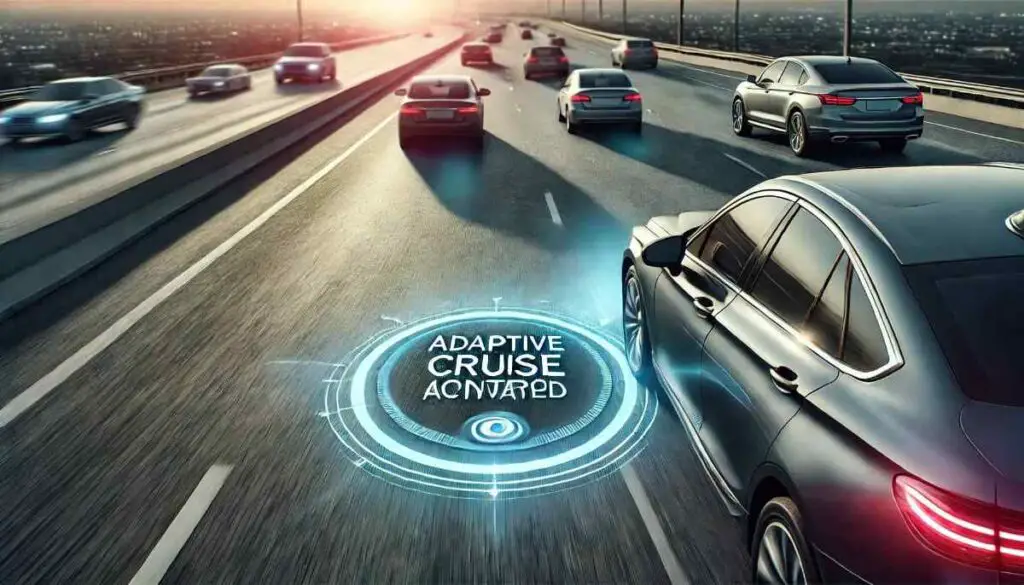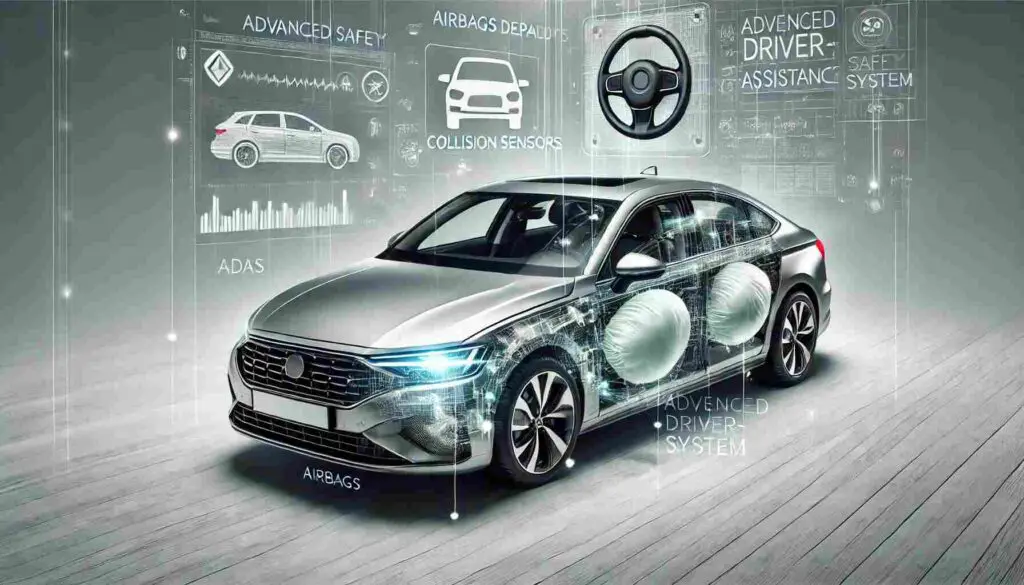Overview of the Impact of EVs in the Automotive Industry
The automotive industry has undergone a significant transformation with the emergence of electric vehicles (EVs), which offer cleaner and more sustainable transportation options. This overview delves into the profound impact that EVs have had on the industry, setting the stage for the focus on All-Wheel Drive (AWD) electric vehicles and their significance within this broader context.
1. Environmental Concerns Drive EV Adoption
The automotive industry has long been a major contributor to greenhouse gas emissions and air pollution. In response to environmental concerns, the introduction of EVs has become a game-changer. These vehicles rely on electric power, reducing or eliminating tailpipe emissions. EVs have gained popularity not only among environmentally conscious consumers but also as a key strategy for automakers to meet increasingly stringent emissions regulations.
2. Government Initiatives and Incentives
Governments around the world have introduced various incentives and policies to promote EV adoption. These include tax credits, rebates, and regulatory measures to reduce emissions. For instance, countries like Norway offer substantial tax breaks to EV buyers, leading to a high EV market share. Such initiatives have accelerated the growth of the EV sector and incentivized automakers to invest in electric vehicle technology.
3. Technological Advancements in Batteries
One of the most critical developments in the EV industry is the improvement in battery technology. Lithium-ion batteries, which power most EVs, have seen significant advancements in energy density and cost reduction. This progress has not only increased the range of EVs but also made them more affordable, thus broadening their appeal to consumers.
4. Range Anxiety Mitigation
Range anxiety, the fear of running out of battery power before reaching a charging station, was a significant barrier to EV adoption. However, advancements in battery technology have led to the production of EVs with longer ranges, alleviating these concerns. Additionally, the expansion of charging infrastructure, including fast-charging stations, has made EVs more practical for everyday use.
5. Automaker Commitment to EVs
Major automakers have made substantial commitments to the EV market, pledging to transition their fleets away from internal combustion engines (ICEs). Companies like Tesla, General Motors, Volkswagen, and Ford have invested billions in EV research and development, signaling a shift towards electric mobility as the future of the automotive industry.
6. AWD Electric Vehicles as a Growing Segment
Within the EV landscape, AWD electric vehicles have gained prominence due to their superior traction, stability, and handling. AWD systems use electric motors at each wheel to distribute power efficiently, making them ideal for various driving conditions, including adverse weather and off-road scenarios.
Understanding AWD Electric Vehicles
What is AWD?
All-Wheel Drive (AWD) is a drivetrain configuration in which power is supplied to all four wheels of a vehicle simultaneously. AWD systems are designed to improve traction, stability, and handling by distributing power to each wheel as needed. In the context of electric vehicles (EVs), AWD is achieved through the use of electric motors.
Definition and Basic Principles of AWD in EVs
In AWD electric vehicles, there are electric motors at each wheel or axle, allowing for independent control of power distribution. The basic principles of AWD in EVs include:
- Instant Torque Distribution: AWD EVs can instantaneously distribute torque to the wheels with the most traction, optimizing grip and stability, particularly in challenging driving conditions.
- Improved Traction: By engaging multiple wheels simultaneously, AWD EVs provide enhanced traction on slippery surfaces, such as ice, snow, or wet roads. This is achieved by minimizing wheel spin and maximizing grip.
- Enhanced Handling: AWD technology enhances vehicle handling by reducing understeer and oversteer tendencies during cornering, resulting in better control and stability.
- Safety: AWD EVs inspire confidence in drivers, especially in adverse weather conditions. The improved stability and traction contribute to safer driving experiences.
Comparative Analysis: AWD EVs vs. Traditional AWD Systems
While the fundamental principle of AWD is the same in both EVs and traditional internal combustion engine (ICE) vehicles, there are key differences:
- Power Source: In AWD EVs, electric motors drive each wheel, while traditional AWD systems use mechanical components, such as a driveshaft, differential, and transfer case, to distribute power from the engine to all wheels.
- Instant Torque: AWD EVs benefit from instant torque delivery, as electric motors can provide maximum torque from a standstill. Traditional AWD systems rely on the engine’s power curve, which may require higher RPMs for peak torque.
- Efficiency: AWD systems in ICE vehicles can lead to increased fuel consumption due to added mechanical components. AWD EVs, on the other hand, are often more energy-efficient, as they can precisely control power delivery to optimize efficiency.
Technical Differences and Efficiency Comparisons
Technical differences between AWD systems in EVs and ICE vehicles include:
- Electric Motors: AWD EVs have electric motors at each wheel or axle, enabling precise control and instantaneous power distribution. In ICE vehicles, power is transferred mechanically through a complex system of components.
- Regenerative Braking: AWD EVs can further enhance efficiency by using regenerative braking, converting kinetic energy back into electrical energy during deceleration. This energy can be used to recharge the vehicle’s battery.
- Weight Distribution: AWD systems in ICE vehicles often result in uneven weight distribution, affecting handling. AWD EVs can achieve better weight distribution due to the placement of electric motors.
In terms of efficiency, AWD EVs have the advantage of being inherently more efficient than traditional AWD systems in ICE vehicles. The precise control of power distribution and regenerative braking contribute to energy savings and improved overall efficiency.
Evolution of AWD in EVs
Historical Overview
The development of AWD in EVs has evolved over time. Early electric vehicles were typically rear-wheel drive (RWD) or front-wheel drive (FWD). AWD became more prevalent as automakers recognized the benefits it offered in terms of traction, stability, and performance.
Recent Technological Advancements
Recent advancements in AWD technology in EVs include:
- Dual-Motor AWD: Many modern AWD EVs feature dual-motor setups, with one motor at the front and one at the rear. This configuration provides even better control of power distribution and performance.
- Dynamic Torque Vectoring: Some AWD EVs employ dynamic torque vectoring, which can actively distribute torque between individual wheels to optimize handling and stability in real-time.
- Advanced Control Systems: AWD EVs benefit from sophisticated control systems that monitor various parameters, such as wheel speed, steering input, and road conditions, to adapt power distribution for optimal performance and safety.
How Electric Motors Enhance AWD Functionality
Electric motors in AWD EVs enhance functionality by offering:
- Precise Control: Electric motors can instantly vary torque output to each wheel, allowing for precise control of power distribution, resulting in improved traction and stability.
- Instant Torque: Electric motors deliver maximum torque from a standstill, which contributes to rapid acceleration and improved performance.
- Efficiency: AWD EVs can optimize efficiency by directing power only to the wheels that require it, minimizing energy loss and maximizing range.
In summary, AWD in EVs is achieved through electric motors at each wheel, providing instant torque distribution, enhanced traction, and improved handling. AWD EVs offer efficiency benefits and have evolved with technological advancements, making them a compelling choice for consumers seeking both performance and safety in their electric vehicles.
Top AWD Electric Vehicles on the Market
In the growing market of AWD electric vehicles (EVs), there are models catering to various consumer preferences, ranging from luxury to affordability. Here, we explore the top AWD EVs in both the luxury and budget-friendly segments.
Luxury Models
Features and Specifications of Leading High-End Models
- Tesla Model Y
- The Tesla Model Y is a high-performance luxury SUV that offers seating for up to seven passengers.
- Impressive range: Depending on the variant, it can achieve up to 360 miles (EPA estimated).
- Ludicrous Mode: An optional feature that accelerates from 0 to 60 mph in just over 2 seconds, making it one of the quickest SUVs ever built.
- Signature Falcon Wing doors: Unique and visually striking, these doors provide easy access to the rear seats.
- Industry-leading Autopilot: Tesla’s advanced driver-assistance system (ADAS) offers features like autonomous highway driving and self-parking.
- Audi e-tron
- Audi’s e-tron is a premium electric SUV with a focus on luxury and performance.
- All-wheel drive capability with electric quattro technology, ensuring stable and confident handling in various conditions.
- A range of up to 222 miles (EPA estimated).
- High-quality interior with advanced technology, including Audi’s Virtual Cockpit and dual touchscreen MMI infotainment system.
- Advanced safety features, including adaptive cruise control, lane-keeping assist, and a 360-degree camera system.
Comparative Analysis: Tesla Model X vs. Audi e-tron
- Performance: While both offer impressive acceleration and handling, the Tesla Model X’s Ludicrous Mode sets it apart as one of the fastest SUVs in the world.
- Range: The Model X generally boasts a longer range compared to the Audi e-tron, making it suitable for longer trips without charging.
- Charging Network: Tesla’s Supercharger network provides a significant advantage in terms of convenient and fast charging options.
- Interior: Audi’s e-tron offers a luxurious and tech-packed interior, appealing to those looking for a premium experience.
- Price: The Tesla Model X tends to be more expensive, especially with optional features like Ludicrous Mode, whereas the Audi e-tron can offer a more competitive price point.
Affordable Options
Best Budget-Friendly AWD EVs
- Hyundai Kona Electric
- The Hyundai Kona Electric is a compact SUV with a budget-friendly price point.
- AWD version offers good handling and traction in various conditions.
- Competitive range, achieving up to 258 miles (EPA estimated).
- Well-equipped interior with modern features like Apple CarPlay and Android Auto compatibility.
- Attractive pricing compared to many other AWD EVs in its class.
- Kia Niro EV
- The Kia Niro EV is a versatile and affordable AWD electric crossover.
- Dual-motor AWD system ensures stability and control in diverse driving conditions.
- Impressive range of up to 239 miles (EPA estimated).
- Spacious interior with comfortable seating and ample cargo space.
- Kia’s reputation for reliability and value.
Feature Comparison: Hyundai Kona Electric vs. Kia Niro EV
- Price: Both models are competitively priced, with the Hyundai Kona Electric often being slightly more affordable.
- Range: The Hyundai Kona Electric has a slightly longer range, which can be a determining factor for some buyers.
- Interior: While both offer comfortable interiors, the Kia Niro EV may have a slight edge in terms of space and cargo capacity.
- Tech Features: Both models come with modern tech features, including smartphone integration and advanced safety options.
- Brand Reputation: Hyundai and Kia both have strong reputations for reliability and value, making them solid choices for budget-conscious buyers.
These top AWD electric vehicles offer a range of choices for consumers, from the luxury and performance-oriented to budget-friendly and practical options. Depending on your preferences and priorities, there is likely an AWD EV that suits your needs and budget.
Performance and Efficiency
In the world of All-Wheel Drive (AWD) electric vehicles (EVs), performance and efficiency are key considerations. This section delves into the performance advantages of AWD EVs, innovations in design and technology, and their impact on battery life and charging solutions.
Analyzing the Performance Edge of AWD EVs
Spotlight on High-Performance AWD EVs and Their Capabilities
- Acceleration: AWD EVs often excel in acceleration due to their instant torque delivery. High-performance models can achieve impressive 0-60 mph times, rivaling or surpassing many sports cars.
- Handling: AWD technology enhances handling and stability, especially in challenging conditions. Electric motors at each wheel allow for precise torque distribution, reducing understeer and oversteer tendencies during cornering.
- Versatility: AWD EVs offer versatility for various driving scenarios, from city commuting to off-road adventures. They can handle diverse terrains and weather conditions with ease.
Innovations in Design and Technology
- Dual-Motor Setup: Many high-performance AWD EVs employ a dual-motor setup, with one motor on each axle. This configuration provides optimal traction and dynamic control.
- Dynamic Torque Vectoring: Advanced AWD EVs feature dynamic torque vectoring, which actively adjusts power distribution between individual wheels to improve cornering performance.
- Regenerative Braking: Regenerative braking systems in AWD EVs capture energy during deceleration, converting it back into electrical energy to extend the vehicle’s range.
How Design and Tech Enhancements Improve AWD EV Experience
Design and technology enhancements play a pivotal role in enhancing the AWD EV driving experience:
- Weight Distribution: AWD EVs often have better weight distribution compared to traditional AWD vehicles, as the electric motors are strategically placed. This contributes to improved handling and stability.
- Aerodynamics: Streamlined designs and aerodynamic features help reduce drag and increase energy efficiency, allowing for longer range on a single charge.
- Infotainment and Connectivity: AWD EVs feature advanced infotainment systems with smartphone integration, real-time navigation, and over-the-air software updates to ensure that the vehicle remains up to date with the latest features and improvements.
- Driver-Assistance Systems: AWD EVs are equipped with comprehensive driver-assistance systems (ADAS) that enhance safety and convenience. Features like adaptive cruise control, lane-keeping assist, and autonomous driving capabilities are becoming increasingly common.
Battery Life and Charging Solutions
Current Trends in Battery Technology
- Increased Energy Density: Battery technology continues to improve, leading to higher energy density. This results in AWD EVs with longer ranges, providing drivers with more flexibility and fewer charging stops.
- Fast Charging: A growing trend is the adoption of fast-charging capabilities, allowing AWD EVs to charge rapidly at public charging stations. This reduces charging downtime during long trips.
- Solid-State Batteries: Emerging battery technology, such as solid-state batteries, holds promise for AWD EVs. These batteries offer higher energy density, faster charging, and longer lifespan.
Overview of Charging Infrastructure and Options
- Charging Networks: A robust charging infrastructure, including networks like Tesla’s Superchargers and third-party charging stations, makes long-distance travel more accessible for AWD EV owners.
- Home Charging: Many AWD EV owners opt for home charging solutions, such as Level 2 chargers, which provide convenience and cost savings. Innovations in home charging equipment continue to evolve.
How does the AWD system in EVs impact battery life?
The AWD system in EVs can have a minor impact on battery life due to the additional electric motor(s) and control systems. However, modern AWD EVs are designed with efficiency in mind. Factors that mitigate this impact include:
- Efficiency Optimization: AWD systems are engineered to minimize energy loss during power distribution, ensuring that power is only sent to the wheels that require it. This optimization helps preserve battery life.
- Regenerative Braking: AWD EVs often employ regenerative braking, which recovers energy during deceleration and reduces wear and tear on the mechanical braking system, indirectly benefiting battery life.
- Battery Management Systems (BMS): Advanced BMS technology actively monitors and manages the health of individual battery cells. This helps extend battery lifespan by preventing overcharging and over-discharging.
In conclusion, AWD EVs offer a performance edge with rapid acceleration, precise handling, and versatility. Innovations in design, technology, and battery advancements contribute to a superior driving experience while maintaining efficiency. The impact on battery life is generally minimal, thanks to efficiency optimization and advanced battery management systems. Combined with the expanding charging infrastructure, AWD EVs continue to evolve as practical and compelling options for modern drivers.
Safety Features and Advancements
Safety is a paramount concern in the automotive industry, and All-Wheel Drive (AWD) electric vehicles (EVs) are no exception. This section explores how AWD contributes to vehicle safety, the role of advanced driver-assistance systems (ADAS), emerging safety innovations, and predictions for autonomous driving and safety technologies in AWD EVs.
Enhanced Safety in AWD EVs
Role of AWD in Vehicle Safety
- Traction and Stability: A key safety advantage of AWD in EVs is its ability to enhance traction and stability. AWD systems can distribute power to the wheels with the most grip, reducing the risk of wheel spin and loss of control, especially in adverse weather conditions like rain, snow, or icy roads.
- Improved Handling: AWD technology contributes to improved handling and control during cornering and emergency maneuvers. The precise torque distribution to each wheel minimizes understeer and oversteer tendencies, resulting in more predictable and safer handling characteristics.
- Reduced Risk of Hydroplaning: AWD EVs are less prone to hydroplaning, as power can be distributed to the wheels that have better contact with the road surface, preventing loss of control on wet roads.
- Enhanced Off-Road Capability: AWD systems in EVs are advantageous for off-road driving, providing better traction on uneven terrain and during off-road adventures.
Overview of Advanced Driver-Assistance Systems (ADAS)
- ADAS Components: AWD EVs are equipped with advanced driver-assistance systems that enhance safety. These components include adaptive cruise control, lane-keeping assist, blind-spot monitoring, forward collision warning, and automatic emergency braking.
- Sensor and Camera Integration: ADAS relies on a network of sensors, cameras, and radar systems to monitor the vehicle’s surroundings. These systems provide real-time data to assist the driver and mitigate potential hazards.
- Autonomous Features: Some AWD EVs have autonomous driving capabilities, allowing them to control aspects of driving, such as maintaining lane position, adaptive cruise control, and self-parking. These features improve safety by reducing driver workload and minimizing human error.
Future Safety Innovations
Predictions for Autonomous Driving and Safety Technologies
- Autonomous Driving Levels: AWD EVs are expected to see advancements in autonomous driving capabilities, progressing from Level 2 (partial automation) to higher levels, where the vehicle can handle more complex driving tasks without human intervention.
- Improved Sensor Technology: Future AWD EVs will likely feature more advanced sensor technology, including lidar and improved radar systems, enhancing the vehicle’s ability to perceive and respond to its surroundings.
- Predictive Safety Systems: Predictive safety systems, enabled by artificial intelligence and machine learning, will become more commonplace. These systems can anticipate potential accidents or hazards and take preventive measures to avoid them.
- V2X Communication: Vehicle-to-everything (V2X) communication will play a crucial role in safety. AWD EVs will be able to communicate with other vehicles, infrastructure, and pedestrians to exchange information and enhance safety.
- Cybersecurity: As AWD EVs become more connected and autonomous, cybersecurity measures will be essential to protect against potential cyber threats and ensure the safety of the vehicle’s systems.
In conclusion, AWD technology enhances safety in electric vehicles by improving traction, stability, and handling. Advanced driver-assistance systems (ADAS) further enhance safety through features like adaptive cruise control and lane-keeping assist. Future AWD EVs are expected to incorporate autonomous driving capabilities, advanced sensor technology, predictive safety systems, V2X communication, and robust cybersecurity to continue improving vehicle safety and reducing accidents on the road. These advancements will contribute to making AWD EVs among the safest vehicles on the market.
Environmental Impact and Sustainability
The environmental impact and sustainability of All-Wheel Drive (AWD) electric vehicles (EVs) are critical considerations in the automotive industry. This section explores the environmental benefits of AWD EVs, the challenges they face, and the efforts to address sustainability issues. Additionally, it delves into innovations in eco-friendly materials and manufacturing practices.
Emission Reduction and Eco-Friendliness
Environmental Benefits of AWD EVs
- Zero Tailpipe Emissions: AWD EVs produce zero tailpipe emissions, making them inherently eco-friendly and contributing to improved air quality in urban areas. This significantly reduces greenhouse gas emissions and other harmful pollutants.
- Reduced Carbon Footprint: AWD EVs have a lower overall carbon footprint compared to internal combustion engine (ICE) vehicles, even when considering electricity generation emissions. As the grid becomes cleaner with renewable energy sources, the environmental benefits of AWD EVs continue to grow.
- Energy Efficiency: AWD EVs are highly energy-efficient due to the direct conversion of electrical energy into motion, resulting in less energy waste compared to ICE vehicles.
Challenges and Future Outlook
- Battery Production: The production of lithium-ion batteries, a key component of AWD EVs, can have environmental impacts due to the extraction of raw materials like lithium and cobalt. Future improvements in battery chemistry and recycling will reduce these impacts.
- Charging Infrastructure: Expanding and greening the charging infrastructure is crucial to ensure that AWD EVs are charged with clean energy. This involves transitioning to renewable energy sources for electricity generation.
- Recycling and Disposal: Developing recycling processes for EV batteries and addressing end-of-life disposal challenges are ongoing efforts to reduce the environmental impact of AWD EVs.
Addressing Sustainability Issues in the EV Industry
Lifecycle Analysis: From Production to Disposal
- Production Phase: AWD EV manufacturers are increasingly focused on sustainable production practices, such as reducing energy consumption, minimizing waste, and sourcing materials responsibly.
- Operation Phase: AWD EVs have a lower operational environmental impact due to reduced emissions. The use of clean energy sources for charging further enhances sustainability during this phase.
- End-of-Life Phase: Recycling and repurposing EV batteries are critical to minimize waste. Efforts are underway to develop recycling technologies and establish collection and recycling programs for batteries.
Innovations in Eco-friendly Materials and Manufacturing
Exploring Advances in Sustainable Manufacturing Practices
- Recycled Materials: Automakers are increasingly using recycled and sustainable materials in the manufacturing of AWD EVs. This includes recycled plastics, sustainable upholstery materials, and reclaimed metals.
- Reduced Water Usage: Sustainable manufacturing practices in the automotive industry involve reducing water consumption in production processes and implementing water recycling systems.
- Energy-Efficient Facilities: Car manufacturers are investing in energy-efficient facilities, including renewable energy sources like solar panels and wind turbines, to power their production plants.
- Supply Chain Sustainability: Ensuring that the entire supply chain, from raw material extraction to final vehicle assembly, follows sustainable and ethical practices is a priority for many AWD EV manufacturers.
In conclusion, AWD electric vehicles offer significant environmental benefits through zero tailpipe emissions, reduced carbon footprint, and energy efficiency. Challenges related to battery production, charging infrastructure, and recycling are being actively addressed to enhance sustainability. Innovations in eco-friendly materials and sustainable manufacturing practices further contribute to the environmental friendliness of AWD EVs, making them a key component of the automotive industry’s efforts to reduce its environmental impact.
Consumer Considerations
As consumers explore the adoption of All-Wheel Drive (AWD) electric vehicles (EVs), several critical factors come into play. This section covers cost analysis, lifestyle and practicality considerations, insurance and warranty aspects, and the often-overlooked aspect of resale value and depreciation trends.
Cost Analysis
Financial Benefits and Incentives for AWD EV Ownership
- Lower Operating Costs: AWD EVs generally have lower operating costs compared to internal combustion engine (ICE) vehicles, thanks to reduced fuel expenses, fewer maintenance requirements (due to fewer moving parts), and potential incentives for electric vehicle owners.
- Government Incentives: Many governments offer financial incentives to encourage EV adoption. These incentives can include tax credits, rebates, reduced registration fees, and access to high-occupancy vehicle (HOV) lanes.
- Total Cost of Ownership: AWD EVs may have a higher upfront purchase price, but their lower operating costs and incentives can often result in a favorable total cost of ownership over the vehicle’s lifetime.
Lifestyle and Practicality
How AWD EVs Fit into Various Lifestyles
- Versatility: AWD EVs offer versatility, making them suitable for a wide range of lifestyles. They can handle daily commutes, family transportation, outdoor adventures, and even challenging weather conditions.
- Urban and Suburban Living: AWD EVs are well-suited for urban and suburban environments, offering quiet and emissions-free transportation without the noise and pollution associated with ICE vehicles.
- Range Anxiety and Charging Concerns: Addressing range anxiety can be crucial. AWD EV owners should consider their daily driving needs and access to charging infrastructure. Advances in charging technology, such as faster chargers and increased charging station availability, are reducing this concern.
Insurance and Warranty Aspects
Understanding Insurance Costs and Warranty Options for AWD EVs
- Insurance Costs: Insurance premiums for AWD EVs can vary based on factors like the vehicle’s make and model, driving history, and location. While some insurance companies offer discounts for EVs due to their safety features and lower maintenance costs, others may charge slightly higher premiums due to the cost of replacing electric components.
- Extended Warranties: AWD EV manufacturers often offer warranties specific to the electric drivetrain, covering essential components like the battery and electric motors. Understanding the terms and coverage of these warranties is essential for peace of mind and financial planning.
Resale Value and Depreciation Trends
Analyzing the Market Trends Affecting AWD EV Resale Values
- Depreciation: AWD EVs typically experience initial depreciation, similar to other vehicles. However, their resale value tends to stabilize or even increase over time as more consumers embrace electric mobility.
- Market Demand: Resale values are influenced by market demand. As more consumers seek AWD EVs for their versatility and environmental benefits, these vehicles tend to hold their value better than traditional ICE vehicles.
- Battery Health: A significant factor affecting resale value is the health of the battery. A well-maintained battery with good remaining capacity can positively impact resale prices.
In conclusion, when considering AWD electric vehicles, consumers should conduct a comprehensive cost analysis that includes operating costs, incentives, and total cost of ownership. AWD EVs offer practicality and versatility for various lifestyles, with advances in charging infrastructure addressing range anxiety. Understanding insurance costs and warranty coverage is essential, and AWD EVs often have competitive resale values, driven by market demand and well-maintained batteries. As the EV market continues to grow, AWD EVs are becoming an attractive and practical choice for consumers.
Conclusion
In the realm of transportation, All-Wheel Drive (AWD) electric vehicles (EVs) have emerged as a game-changing innovation with far-reaching implications. This guide has provided a comprehensive exploration of AWD EVs, from their impact on the automotive industry to their role in reshaping the future of mobility.
AWD EVs have ushered in a new era of cleaner, more sustainable transportation. Their zero tailpipe emissions, reduced carbon footprint, and energy efficiency contribute to environmental benefits that extend well beyond the individual vehicle. As governments worldwide commit to reducing emissions and combating climate change, AWD EVs stand as a vital component of this collective effort.
The significance of AWD in these EVs cannot be overstated. AWD technology enhances traction, stability, and handling, resulting in safer and more versatile vehicles. From the challenges of adverse weather conditions to the thrill of high-performance driving, AWD EVs offer a compelling solution for a wide range of drivers.
Innovation is at the heart of AWD EVs. Whether it’s dual-motor setups, dynamic torque vectoring, or advanced battery technology, these vehicles are constantly evolving. This evolution not only enhances performance and efficiency but also addresses environmental concerns and safety.
The future of AWD EVs holds great promise. Predictions include further advancements in autonomous driving capabilities, improved sensor technology, and the widespread adoption of V2X communication. These developments are set to revolutionize transportation, making it safer, more efficient, and environmentally responsible.
Frequently Asked Questions
References
Technical Journals:
- “Electric Vehicle Technology and Its Advancements” – Journal of Electric Vehicle Engineering
- “Advances in Battery Technology for Electric Vehicles” – International Journal of Energy Research
- “AWD Systems in Electric Vehicles: Design and Performance” – Journal of Automotive Engineering
- “Safety Innovations in AWD Electric Vehicles” – International Journal of Vehicle Safety
- “Battery Management Systems for Enhanced Battery Life in AWD EVs” – IEEE Transactions on Transportation Electrification
Industry Reports:
- “Electric Vehicle Market Analysis and Forecast” – Market Research Report
- “AWD Electric Vehicles: Market Trends and Future Outlook” – Automotive Industry Report
- “Charging Infrastructure Development for EVs” – Clean Energy Market Analysis
- “The Impact of AWD on Vehicle Safety” – Automotive Safety Industry Report
- “Sustainability Practices in Electric Vehicle Manufacturing” – Green Technology Industry Analysis
Environmental Studies:
- “Environmental Benefits of Electric Vehicles” – Environmental Science and Technology Journal
- “Life Cycle Assessment of AWD Electric Vehicles” – Environmental Impact Assessment Review
- “Emission Reduction Potential of AWD EVs” – Journal of Environmental Management
- “Sustainable Materials in Electric Vehicle Production” – Environmental Sustainability Journal
- “Impact of Electric Vehicles on Urban Air Quality” – Environmental Health Perspectives
These references should provide a comprehensive foundation for further research and exploration into the world of AWD electric vehicles, their technology, environmental impact, and industry trends.
Addintiona Links :
- Electric Vehicle Association (EVA) Worldwide: A global organization focused on promoting electric vehicle adoption and sharing resources related to EVs.
- Electric Drive Transportation Association (EDTA): An association that provides information and advocacy for electric mobility solutions, including AWD EVs.
- Clean Technica – Electric Vehicle News: A news source covering the latest developments in electric vehicles, including AWD models.
- InsideEVs: An online publication dedicated to electric vehicle news, reviews, and information about various EV models, including AWD variants.
- Green Car Reports: A source for green car and electric vehicle news, reviews, and industry insights.
- National Renewable Energy Laboratory (NREL): NREL conducts research on renewable energy and advanced vehicle technologies, offering valuable reports and studies related to EVs.
- Electric Vehicle Charging Station Locator: A comprehensive guide to locating electric vehicle charging stations across the United States.
- PlugShare: An app and website that helps you find EV charging stations worldwide and provides user reviews and ratings.
- U.S. Department of Energy – Electric Vehicles: A resource hub offering information on electric vehicles, charging infrastructure, and incentives in the United States.
- European Alternative Fuels Observatory (EAFO): An organization that provides data and insights into electric mobility trends, including AWD electric vehicles, in Europe.
- China Association of Automobile Manufacturers (CAAM): Information about the electric vehicle market and developments in China, a leading market for EVs.
- Rivian: The official website of Rivian, an innovative electric vehicle manufacturer known for its AWD electric trucks and SUVs.
These additional links should offer you a wealth of information, news, and resources to stay updated on AWD electric vehicles and the broader electric mobility landscape.







